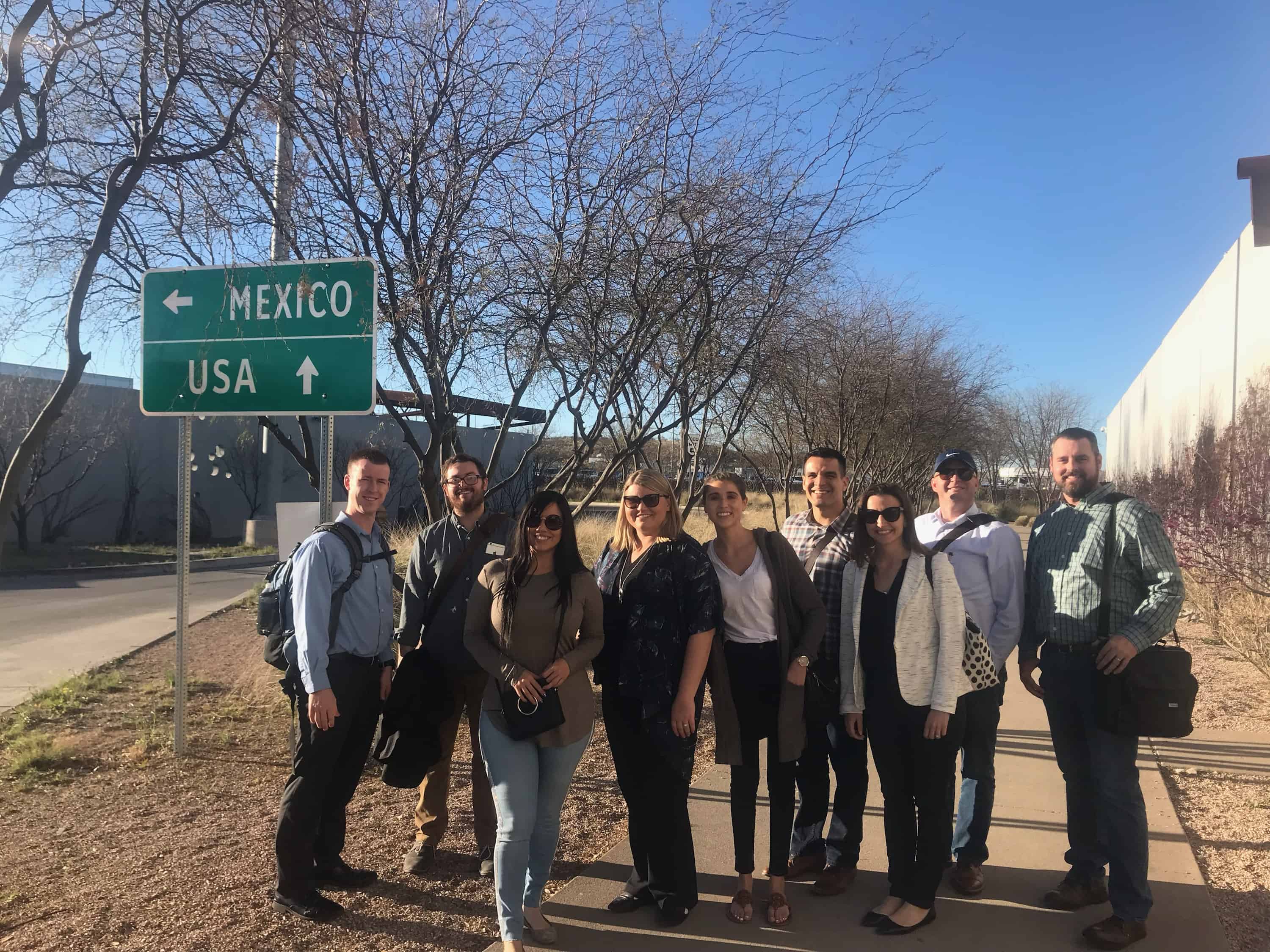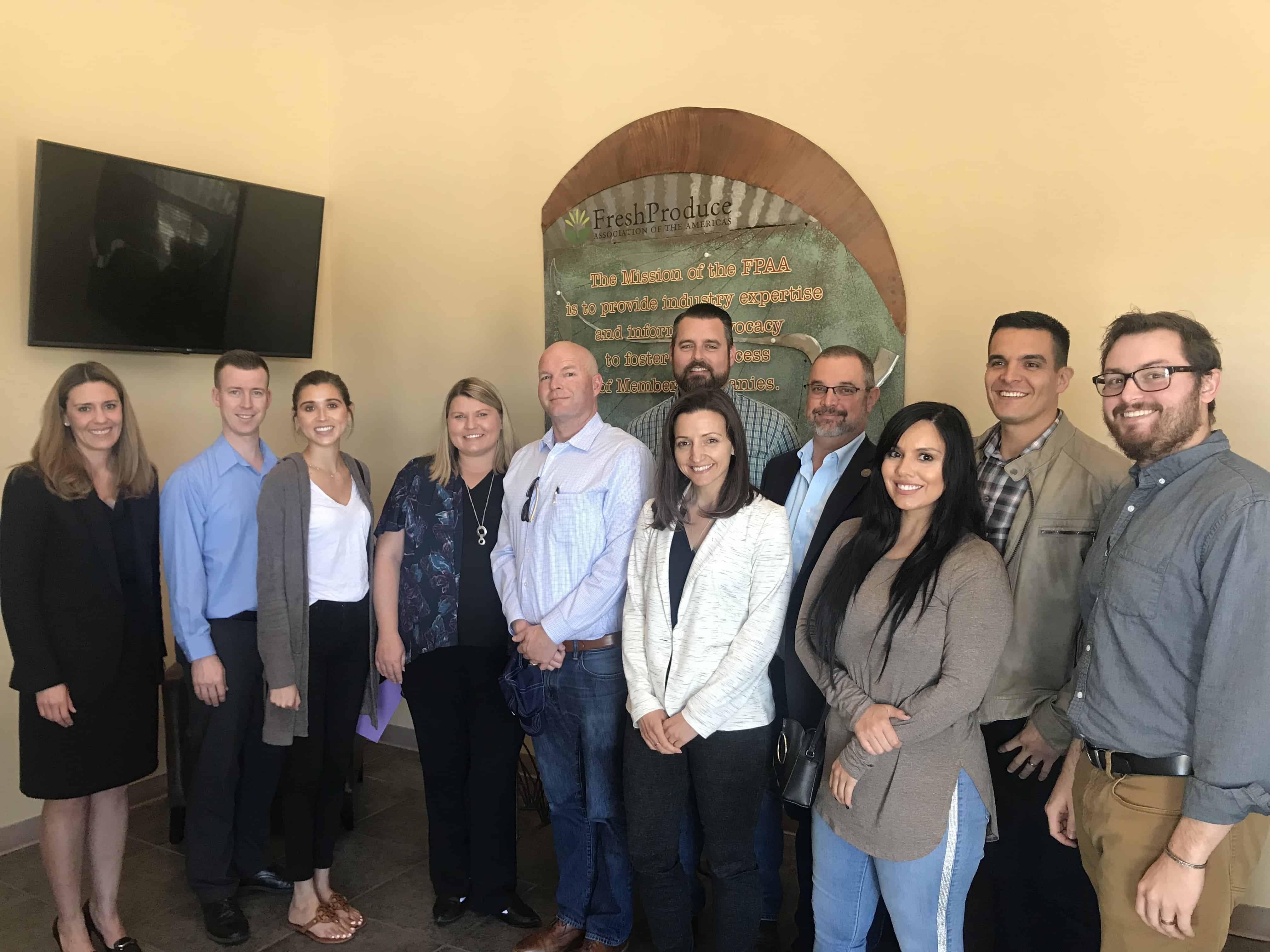For those who live some distance from Arizona’s border with neighboring Mexico, the reality of its impact on commerce and tourism may be difficult to grasp. Seeing up close and personal the level of activity on the border and its importance to our economy helps put things into perspective.
A group of 11 young professionals who are part of our Arizona Industry Fellows program had the opportunity to visit Ambos Nogales, some of whom were traveling across the Arizona border into Mexico for the first time for an eye-opening look at border issues and impacts.
Of the nearly 2,000 miles of international border that separate the U.S. and Mexico, more than 350 miles run along Arizona. By the numbers, this proximity is a huge economic benefit to the state’s economy. According to research published by the Arizona Chamber Foundation, Arizona-Mexico Commission and Arizona Chamber of Commerce and Industry, more than 50 million people cross Arizona’s border each year, along with $42 billion worth of goods. And, Arizona’s two-way trade with Mexico in 2018 reached $16.6 billion. That’s a lot of commerce happening across our boundary, making it vital that Arizona’s ports of entry are up-to-date and running smoothly. More on that last point later.
The Fellows’ first stop was in Nogales, Arizona where we met with Santa Cruz County Supervisor, Bruce Bracker, who serves on the Greater Nogales Santa Cruz County Port Authority.
Supervisor Bracker discussed the challenges around the reduction in Customs and Border Protection officers and the need to make up the now approximately 30 percent deficit in customs officers.
He talked us through several projects in the works at Nogales’ three land ports of entry: Mariposa, DeConcini, and Morley Avenue. He also noted Santa Cruz County would like to add cold room storage capacity at the Mariposa commercial port entry to accommodate the flow of produce and other temperature-sensitive commodities.
Next, we heard from Georgina Felix, the director of international affairs for the Fresh Produce Association of the Americas, who shared with us that the manufacturing and fresh produce industries make up more than 60 percent of the economy in Santa Cruz County. Ambos Nogales is a hub for trade and tourism and the investments in infrastructure improvements keep the corridor competitive. Investments include $184 million for the expansion and modernization of the Mariposa port of entry, $1.8 million into Mexico’s highway 15, and most recently $134 million for State Route 189 which connects the port of entry to I-19.
Our last stop was Evans Manufacturing, a promotional products supplier with a state-of-the-art manufacturing facility in Nogales, Sonora. Evans and other maquiladoras serve as an economic driver for the region by making up 55 percent of the GDP in Nogales, Sonora, and directly impacting jobs in Arizona. Like many companies on both sides of the border, Evans sees a great challenge in filling jobs with skilled workers.
The maquiladora (manufacturing) industry in Sonora alone has over 3,000 jobs available to be filled today. Recently, delays at the ports of entry have reached new levels, depending on the time of day, it can take four to five hours to cross the border. Longer crossing times for trucks are costly for businesses and have a severe impact on competitive commerce industries like Just-In-Time manufacturing structures.
After a productive trip south, we began the journey home. Crossing at the Mariposa Port of Entry, the group experienced firsthand the impact of the recent reassignment of CBP personnel away from the ports of entry to support Border Patrol.
This reassignment has left the already understaffed ports of entry in an even more strained and unsustainable situation. After a four hour wait at the port, followed by additional state and federal inspections, it was clear that the delays are a deterrent for those who cross regularly to shop, dine, and spend money that contributes to the economy in Nogales, Arizona. After all, 60-70 percent of the sales tax in Arizona’s border communities is attributed to the Mexican visitor.
Despite the hold up on our return trip, the cross-border visit was illuminating and highlighted the importance of maintaining a strong relationship with Mexico, our good neighbor and number one trading partner.
Seeing directly the flow of people and products through some of the busiest U.S. ports of entry painted a vivid picture of the economic impact this activity has on both Arizona and Mexico. As the U.S. works through its handling of border issues, like migrant caravans and building a wall, we can’t lose sight of the daily importance of cross border relations and their impact on those living in border communities, as well as on Arizona’s economy as a whole.


